Mini Review / Open Access
DOI: 10.31488/jjm.1000104
Therapeutic Thematic Arts Programming (TTAP Method®)Meditation Mindfulness: How Meditation Can Enhance Cognition with the Collaboration of using Creative Arts
Linda Levine Madori, Felicia Fini
St. Thomas Aquinas College, USA
*Corresponding author:Dr. Linda Levine Madori, CTRS, ATR-BC, LCAT, Professor, St. Thomas Aquinas College, Sparkill, New York 10976, Tel: 845-398-4184
Abstract
This paper describes two different quasi-experimental design case studies conducted in two different senior living centers over the time period of seven weeks. The first study was conducted in the fall of 2015 and the second study was conducted in the fall of 2016. Both studies were done by students at Saint Thomas Aquinas College, whom were randomly paired with residents who were diagnosed with early onset Alzheimer’s disease. Pre and post design questions were utilized to measure the residents’ mood, memorization, socialization, and relaxation. The results of the two case studies showed a significant correspondence of participation in the TTAP Method ® programming which uses mediation prior to each activity to enhance the residents’ feelings of increased memory abilities, mood enhancement, and overall feeling of relaxation.
Keywords: alzheimer’s disease, TTAP method ® , cognition, mood, memory, relaxation, socialization, therapeutic recreation, meditation, art therapy and alzheimer’s disease, therapeutic recreation and alzheimer’s disease
Introduction
The two studies that were done by Saint Thomas Aquinas College students were both qualitative and quantitative study that is based on verbal self-expressive questions. All the students’ questions were asked in response to the use of the Therapeutic Thematic Arts Programming (TTAP Method®), which provides enhanced social stimulation and increased cognitive abilities through meditation and theme conversations. The TTAP Method® also provides stimulation to distinct brain systems,which promotes brain wellness and neural regeneration. Therefore the method provides a viable meaning for enhancing cognitive functioning in older adults [1-3]. The TTAP Method® is a twelve step intervention that directs the focus of therapy on proven factors in helping cognition; the reinforcement and utilization of remaining strengths through accessing long-term memory, and controlling motor coordination [1]. During the TTAP Method® the patient’s input is very significant. It gives the individual the opportunity to express their thoughts with the group and promotes interaction with others in the group as well. Therefore it allows the patient to be able to participate, increase their self-esteem, and allows for individualization [3-5]. The two studies findings continue to support clinical interaction with participants through stimulating all aspects of brain functioning while addressing social and emotional needs [2].
Overview
It is estimated that as many as 5.1 million Americans may have Alzheimer’s disease, which means that one to four family members act as a caregivers for each individual that has the disease [4]. Alzheimer’s disease is the 4th leading cause of death in adults in the U.S. after heart disease, cancer, and stroke. It is a degenerative disease that attacks the brain resulting in impaired memory, thinking, language, and behavior. The disease is not part of the normal aging process and it does progress over time, which also can affect judgment and social functioning.According to the U.S. Census Bureau, it is estimated that by the year 2050, 15 million individuals will have Alzheimer’s disease [5].
The first study was conducted in the fall of 2015 within Promenade Senior Living at Blue Hill located in Perl River, New York over a seven-week period. The three students from St. Thomas Aquinas College were randomly assigned a resident. The residents’ that were selected were two Caucasian males and one Caucasian female, and the mean age was 90. The second study was conducted in the fall of 2016 within Dowling Gardens located in Sparkill, New York, also over a seven-week period. The ten students from St. Thomas Aquinas College were randomly assigned a resident. Out of the ten residents that were selected, nine were Caucasian female and one was a Caucasian male, and the mean age was 85.The TTAP Method® was implemented on highly functioning geriatric residents diagnosed with early stages of Alzheimer’s disease. The residents that were chosen for both of the studies were recommended through the senior living staff because these residents showed symptoms of withdrawal and lack of participation from daily activities. The twelve steps of TTAP Method® structured each session over the seven weeks that the students worked with the residents. The twelve steps of the TTAP Method® are: Meditation and drawing, medication and sculpture, medication and movement, medication and poetry, meditation and food or cooking, meditation and phototherapy, meditation and theme event, meditation and sensory stimulation, meditation and drama therapy [1]. Each of these steps specifically correlates to the various reigns within the brain, which strengthens cognition and psychosocial abilities( Table 1). The main goal of the research is to increase the residents’ time in therapeutic recreation programming from a session that is 30 minutes long to a session that is an hour long ( Figure1,2)]. The longer the session the more stimulation of the brain and cognition, which overall increases the residents’ quality of life [1].
Data Collection
Prior to each session, the residents and their family members completed consent forms to participate. They also had the option of attending the sessions each week and had the ability to withdraw form the study at any time. The studies collected both subjective and objective data, which includes data from each session’s average score from the pre and post questions along with verbal responses. The data was gathered and documented at the beginning and the end of each session. The pre and post questions were answered based off of a numeric Likert Scale, five being the highest and 1 being the lowest. The students conducting the study had come up with pre and post questions for their residents’ that intergraded with the domains they were working with. The pre session’s questions involved a social question:How would you rate your daily interaction thus far? A memory question: Did you recall any memories from your past today? A relaxation question: How relaxed do you feel right now? A cognitive question: Have you learned something new today? Lastly, a mood question: How has your mood today? The post session’s questions also involved a social question: How would you rate your socialization after this session? A memory question: Did you recall any lifetime memories after this session? A relaxation question: How relaxed are you after this session? A cognitive question: Did this session assist you in learning something new today? Lastly, a mood question: How is your mood after this session? The studies were qualitative without use of a control group. The format that was used for the data collection supports previous findings with the field of Therapeutic Recreation as well as the objectives of the TTAP Method® [1].
Table 1. The twelve steps of the TTAP Method®, its process, what stimulation is presented during each step, and the brain region that is being stimulated throughout the session.
| Step | Process | Stimulation | Brain Region |
|---|---|---|---|
| 1 | Individual thought to group ideas | Linguistic | Broca’s Region |
| 2 | Group ideas to music/ guided imagery | Musical/ Visual | Visual/ Auditory Cortex |
| 3 | Music/ guided imagery to 2D image | Visual | Temporal |
| 4 | 2D image to 3D sculpture | Spatial | Parietal/ Occipital |
| 5 | 3D sculpture to movement | Kinesthetic | Motor Cortex |
| 6 | Movement to word/poetry/stories | Linguistic | Frontal Lobe |
| 7 | Word/poetry/stories to food for though | Spatial | Sensory Cortex |
| 8 | Food for thought to phototherapy | Intrapersonal | Reticular Formation |
| 9 | Phototherapy to themed event | Interpersonal | Broca’s/ Wernicke’s Area |
| 10 | Sensory Stimulation | Kinesthetic | Sensory Cortex/ Parietal |
| 11 | Drama Therapy | Kinesthetic/ Music | Temporal Lobe |
| 12 | Evaluation Feedback |
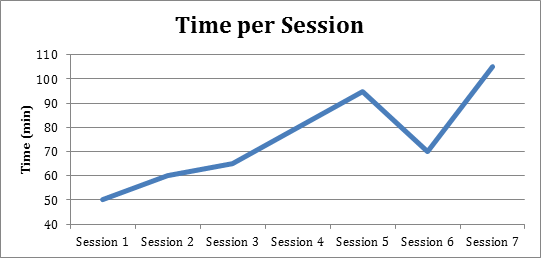
Figure 1.The time spend in programing at the Promenade Senior Living. The time naturally increases from 50 minute sessions to over 100 minute sessions.
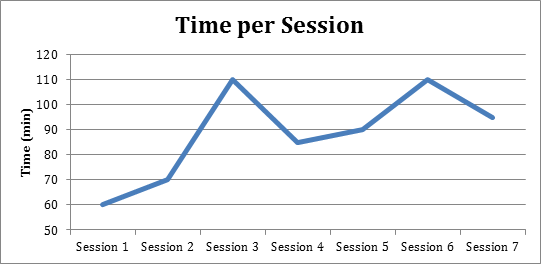
Figure 2.The time spend in programming at Dowling Gardens. The time naturally increases from 60 minute sessions to over 100 minute sessions.
Objectives of the TTAP Method®
The TTAP Method® incorporates five main objectives. The first objective is to embrace the concept of use it or lose it by stimulating all areas of brain functioning to enhance cognitive, emotional, physical, and social capacity. The second objective is to provide opportunities for the individual to integrate life experiences into group experiences through object relations in the creative arts process. The third objective is to provide a system in which the individual can reintegrate into a supportive social group to foster feelings of safety and support and thereby increase social participation. The fourth objective is to engage the participant in a multitude of creative arts experiences: music, drawing, sculpture, movement, poetry, and special theme events. The fifth objective is to provide programming that enables the flow to flourish [1].
Stimulate Optimal Brain Function
As we all know there is no cure for Alzheimer’s disease, however research has been done on the brains plasticity, neural regeneration, and cognitive reserve in patients suffering from the disease that shows the positive changes that can be activated through visual, auditory, and sensory stimulation [3]. Therefore by using the TTAP Method® the residents in the studies were provided with visual, auditory, and sensory stimulation through creative arts as well as stimulation to the three different areas in the brain: the affective system, the strategic system, and the recognition system, which can enhance the brain to make new cells [2]. There has recently been a study conducted at Nanyang Technological University in Singapore that looks at the effects of DBS, Deep Brain Stimulation that targeted the ventromedial prefrontal cortex, which is the part of the brain that is responsible for a higher level of cognitive function. The study had showed a significant improvement to perform memory tasks, also there were new neurons being formed in the brain. These results mean that using DBS can potentially enhance new brain cells; therefore it can help improve memory retention [6].
Social Emotional Needs
There has been recent research in the social sciences that has shown when social and emotional needs are addressed, feelings of self-worth, self-esteem, mood, and all over quality of life are enhanced. The TTAP Method® was designed to address a range of emotional and social needs by increasing opportunities to engage participants in positive individualized and person centered social involvements. When an individual gets diagnosed with early stage Alzheimer’s disease it impacts their short-term memory and that can affect their daily routines, which can affect their quality of life. Due to the decrease of quality of life, the individual may decline in self-confidence, and that can lead to anxiety, depression, and withdrawal from everyday social interactions [2]. Another research has shown that those who socialize more survive up to 20 percent longer compared to those who have isolated lives. Those who live isolated lives are more than twice at risk for developing dementia or other cognitive disease. The TTAP Method® has a direct person-centered approach that naturally enhances feelings of self-worth, which affects the individual’s motivation level to want to participant in social groups and have a support system [2,3].
Discussion
In using the TTAP Method® all aspects of life are explored, which makes social interaction easy in the group settings. Also the TTAP Method® includes dynamic interaction by integrating both verbal and non-verbal communication within a group environment, which is beneficial to the cerebral cortex to maintain brain wellness and skill retention. Due to the loss of socialization and memory in the disease process, this study demonstrated that through participation in person-centered theme programming the individuals engaged for longer periods of time, which activates social, mental and physical domains [1-3].However the memory loss can really become a burden on an individual and impact their self-esteem, and may lead to anxiety, depression, and loss of interest in activities. Since there is the chain reaction to the disease, the TTAP Method® is developed to enhance feelings of self-worth, which then increases all the individuals’ domains, making them have motivation to participate in recreational activities and increasing their quality of life.
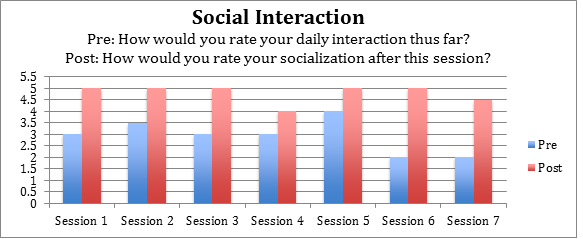
Figure 3.Social interaction at Promenade Senior Living.

Figure 4.Memory at Promenade Senior Living.
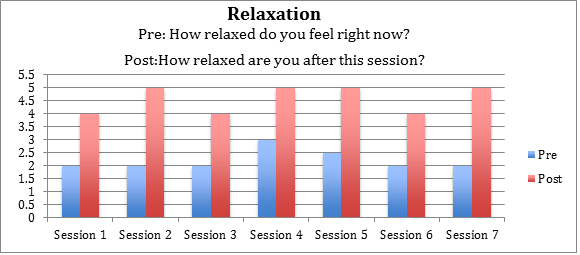
Figure 5.Relaxation at Promenade Senior Living.

Figure 6.Cognition at Promenade Senior Living.
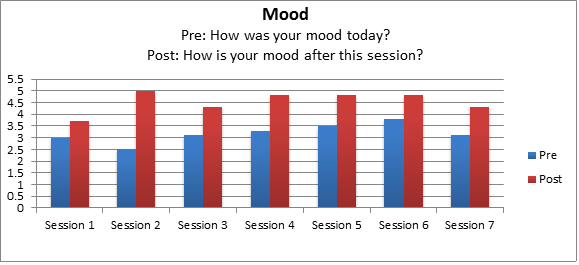
Figure 7.Mood at Promenade Senior Living.
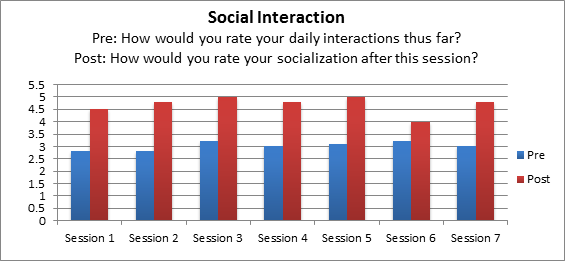
Figure 8.Social interaction at Dowling Gardens.
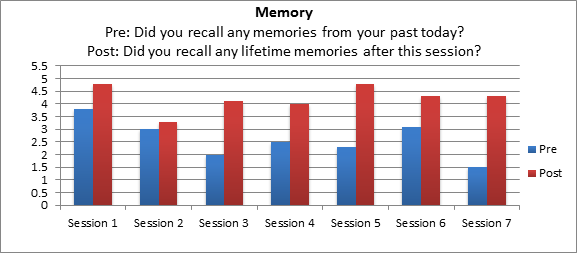
Figure 9.Memory at Dowling Gardens.
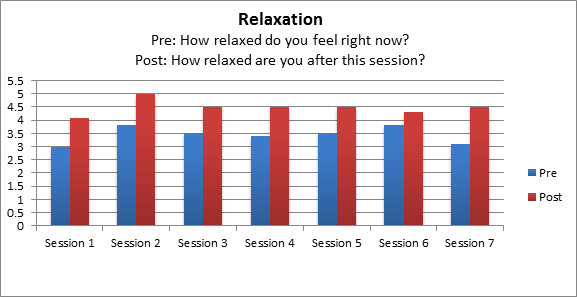
Figure 10.Relaxation at Dowling Gardens.

Figure 11.Cognition at Dowling Gardens.

Figure 12.Mood at Dowling Gardens.
References
Levine-Madori L. Therapeutic Thematic Arts Programming for Older Adults (TTAP), Baltimore, MD: Health Professions Press, 2007.
Levine-Madori L. Transcending Dementia; A New Psychology of Art, Brain and Cognition, Health Professionals Press, Baltimore, Maryland. 2012.
Melville L. Meditation and TTAP Methodwith Residents Diagnosed with Early Stage Alzheimer’s Disease. J Alzheimers ParkinsonismDement. 2016.
Balanky C. TTAP Method Stimulates Mood and Memory in Residents with Mild Cognitive Impairments. J Neurol.2016.
Alzheimer’s Foundation of America – Alzheimer ’sDisease Statistics. 2016.
Levine-Madori L. Alzheimer’s disease – Why the TTAP Method Works. 2017.
Sauer A. Benefits of Deep Brain Stimulation for Alzheimer’s. Alzheimers.net. 2015; p.03.
Received: February 03, 2018;
Accepted: February 14, 2018;
Published: February 17, 2018.
To cite this article : Linda Levine Madori, Felicia Fini. Therapeutic Thematic Arts Programming (TTAP Method®) Meditation
Mindfulness: How Meditation CanEnhance Cognition with the Collaboration of using Creative Arts. Japan Journal of Medicine. 2018: 1:1.
© Linda Levine Madori 2018
